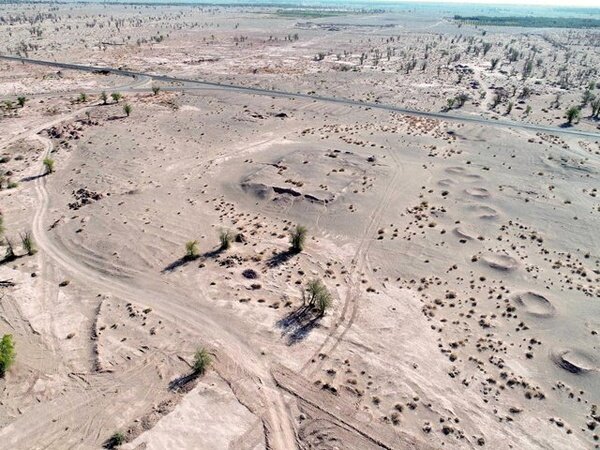Legal boundaries defined for Sassanian site in Kerman

TEHRAN –The Sassanid-era (224–651) Kohneh Qaleh Mirabad Emamqoli site in Rigan county, southern Kerman province, has recently been demarcated.
The Rigan-Fahraj road that ran through this area in the early 1990s severely damaged this site, and Kerman Provincial Gas Corporation has caused irreparable damage to parts of it recently, ILNA quoted Shahram Zare who presides over the demarcation project.
To prevent further destruction and damage to the site as well as illegal construction or unauthorized excavations, new legal boundaries were defined for the site by a team of Iranian archaeologists, he added.
In recent years, archaeologists have recognized and introduced this historical site as one of the unknown cultural resources in the region, and the community wants to protect it as a national heritage, he noted.
The historical site has been inscribed on the national heritage list.
The Sassanid era is of very high importance in the history of Iran. Under the Sassanids, Persian architecture and the arts experienced a general renaissance. Architecture often took grandiose proportions, such as palaces at Ctesiphon, Firuzabad, and Sarvestan, which are amongst the highlights of the ensemble.
Generally, a Sassanid archaeological landscape represents a highly efficient system of land use and strategic usage of natural topography in the creation of the earliest cultural centers of the Sassanid civilization.
In 2018, an ensemble of Sassanian historical cities in southern Iran, titled “Sassanid Archaeological Landscape of Fars Region,” was named a UNESCO site. The ensemble comprises eight archaeological sites situated in three geographical parts of Firuzabad, Bishapur, and Sarvestan.
The World Heritage reflects the optimized usage of natural topography and bears witness to the influence of Achaemenid and Parthian cultural traditions and of Roman art, which latter had a significant impact on the architecture and artistic styles of the Islamic era.
The big and sprawling province is something of a cultural melting pot, blending various regional cultures over time. It is also home to rich tourist spots and historical sites, including bazaars, mosques, caravanserais and ruins of ancient urban areas.
The city of Kerman was probably founded by the Sassanid king Ardashir I (reigned 224–241 CE). Under the Safavids, who took control in 1501, it came to be known as Kerman and was made the capital of the province. The city was sacked by the Uzbeks in 1509 but was quickly rebuilt. Declining Safavid power in the 17th and early 18th centuries allowed Kerman to be attacked and occupied by Afghan tribesmen in 1720.
Kerman province is bounded by the provinces of Fars on the west, Yazd on the north, South Khorasan on the northeast, Sistan-Baluchestan on the east, and Hormozgan on the south. It includes the southern part of the central Iranian desert, the Dasht-e Lut.
ABU/AM
Leave a Comment